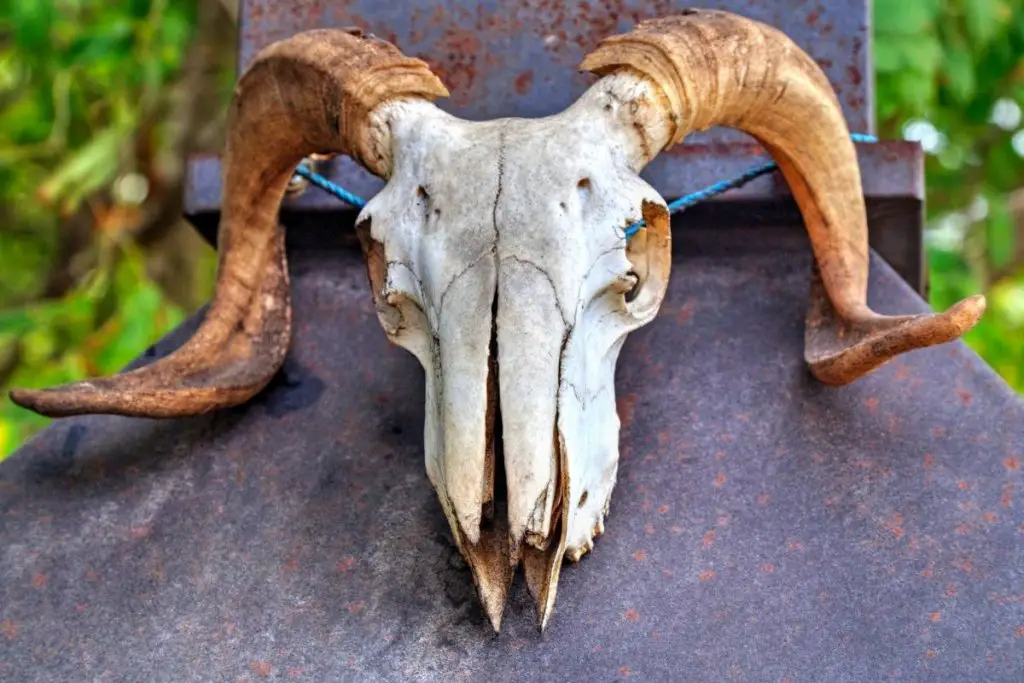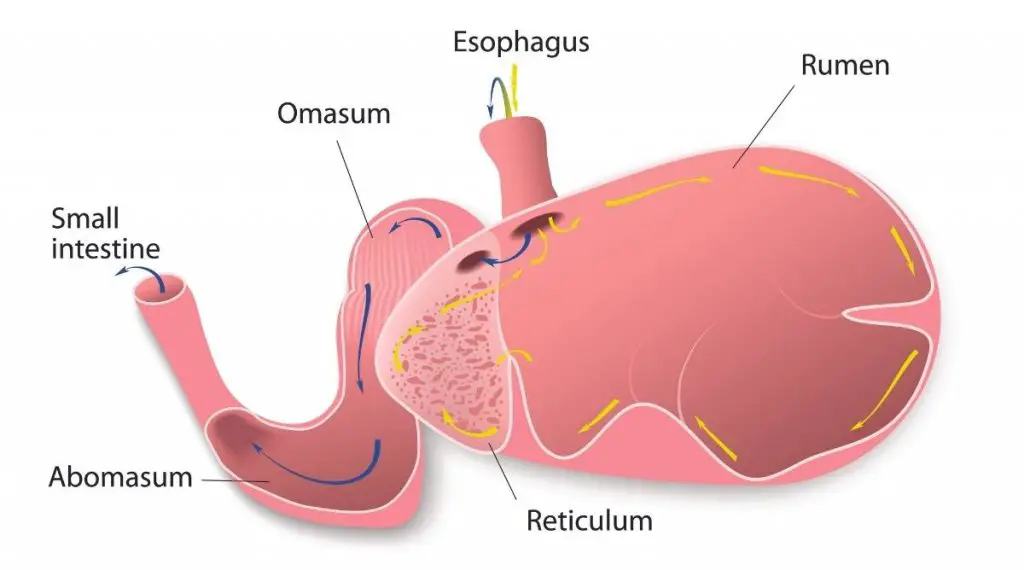Ram anatomy is similar to ewe anatomy, with the main difference being their reproductive systems and horns. The anatomy of a ram includes, among other components, its skull, horns, reproductive system, digestive system, and other organs.
Table of Contents
Skull

A ram’s skull is bigger than a ewe’s skull. Among horned ram breeds, the skull supports the horns. Its sturdy structure protects the brain from impact and potential injuries.
The skull of a ram is made up of the cranium, which contains the brain, and the antorbital fossa, which is a shallow indentation that houses the eye sockets.
The jaw comprises the upper and lower jaws, with teeth on each side. The upper jaw includes incisors, canines, and premolars. The lower jaw includes the ram’s molars and premolars.
The ram’s skull is composed of the maxilla, the frontal bone, the sphenoid bone, the occipital bone, and the parietal bone.
- The maxilla is located above the eye sockets and is used as leverage for the ophthalmic muscles to attach to the skull.
- The frontal bone is located on the top and front of the head. It has two halves: an upper half, called the glabella, and a lower half, called the basioccipital.
- The sphenoid bone attaches to the occipital bone at the back of the ram’s head. It helps protect the brain.
- The occipital bone is located behind the ears and attaches to the skull, with a ball joint that allows for movement. It partly forms the posterior part of the head and where many muscles attach for chewing or swallowing food.
- The parietal bone surrounds the brain and forms part of the forehead. It also contains blood vessels and nerves that help control eye movement, hearing, balance, and smell.
Horns
Rams have two horns made of fibrous keratin tubules that protect against damage to the skull and the brain while providing a structure sturdy enough to give it a chance to fight back against other rams, especially during the breeding season.
Horns are used for protection, mating, and fighting for territory against other rams.
Reproductive system
Rams have two testicles. The testicles produce testosterone, which helps to build muscle mass and increase libido in rams. They also produce sperm.
Testosterone makes rams more aggressive toward other rams, leading to fights for dominance within their herd.
In rams, the daily average sperm count is about 20 million sperm cells for each testicle.
Digestive system

The four compartments of a ram’s stomach are:
- Rumen
- Reticulum
- Abomasum
- Omasum
The first section of the stomach (rumen) acts as an area where the ram can store food. It serves as a part where the fermentation of foods starts.
The second section (reticulum) compresses the bolus (ball of food) and propels this towards the next compartment.
The third part of the stomach (omasum) contains glands that secrete hydrochloric acid and enzymes needed for digestion. These glands also line up with small openings called H-shaped pouches, where they mix with saliva produced by salivary glands.
The resulting mixture moves through the abomasum. The abomasum is where food is combined with other enzymes and chemicals to break down its chemical bonds for absorption and utilization of nutrients.
The byproducts and waste are then eliminated through the rectal opening.
Internal organs
Notable internal organs in a ram include the heart, lungs, kidneys, liver, and spleen.
- The heart pumps blood and brings oxygenated blood to different body parts while excreting deoxygenated blood (a byproduct of the process) through the lungs.
- The lungs bring oxygen into the body and work with the vascular/circulatory system to bring the optimal balance of acids and bases in the ram’s body.
- The kidneys remove waste products from the bloodstream, thus improving the balance of minerals, salts, and water inside the ram’s body.
- The liver aids in digestion by breaking down fats into smaller molecules for easier absorption.
- The spleen filters the blood plasma by fighting off viruses and bacteria. It also helps store blood.

